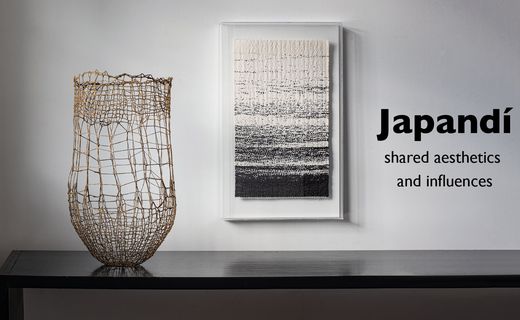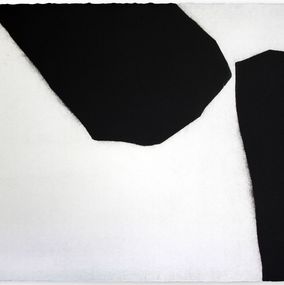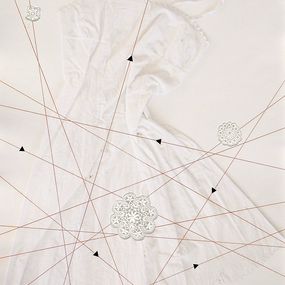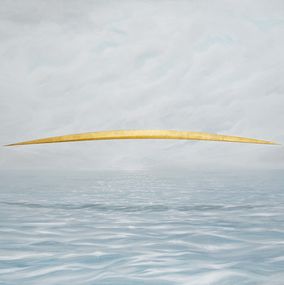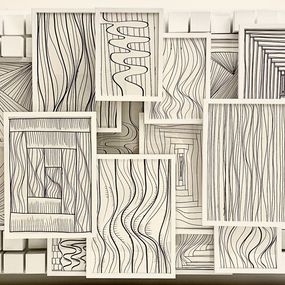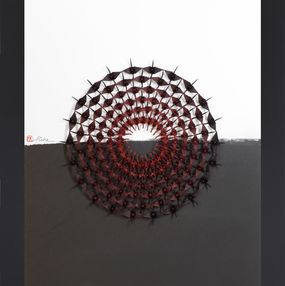
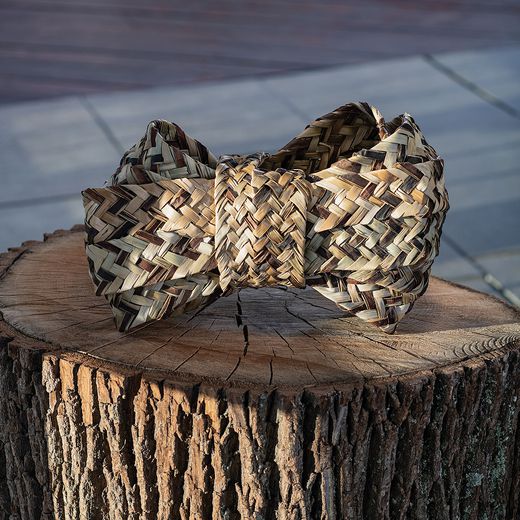
Biography
Statement
"I define a basket as an object, often a vessel shape, created in a textile structure where the dynamics of each component are visible. My expanded definition includes anything implying a relationship to basketry in its technical, aesthetic or functional terms. To me, that vocabulary includes: lines bent, looped, passed under, over, crossed. Resilience. Flexibility. Self-supporting, standing, rigid. Planes folded, bent, layered to obtain volume. Drawing lines in space. Filling space. Eliminating material to form space into parts. Accumulating spaces into a large whole. Enclosing, containing. Shifting dimensions. Repetition: rhythm, texture, pattern. Order, disorder. Joining, connecting, binding. Disassembling, screening, enhancing. Curiosity: package, trapping or wrapping space. Sphere: bind around, bundle. Handle: carrying. Hanging: pressed, weighing, balancing. Cutting, peeling, piecing. Breaking, unweaving, making holes.
I am preoccupied with space, textuality, structural surface and architectural quality. I think a form reveals richer aspects when it is viewed not only in terms of the real materials such as sticks or bark, but in terms of space or holes in which real material is not present. The matter of basket structure might seem to deal only with material or technical domain which is not relevant to me. But I now know that structural interplay of the material 's property and constructing method works creatively only when I personally become conscious of its nature, merits and limits. It is dependent on how I see and think. The finished object reveals clearly how I have changed from what I was before I made the piece.
I call myself a basketmaker because I inform my work by thinking and processing the nature and history of basketry. And also, because in order to realize the ideas, I choose to use materials and structural methods that have typically been used for basketmaking. It pleases me that my ideas and the final results of my work expand the boundary well beyond what I once thought of as the domain of basketry."
Hisako Sekijima
Selected collections and exhibition venues:
National Museum of Modern Art, Tokyo, Japan (Domain of the Medium and 11 Approaches to Contemporary Crafts, permanent collection); Yokohama Museum of Art, Japan (Weaving the World: The Art of Linear Construction); Erie Art Museum, Pennsylvania (The Tactile Vessel, curated by Jack Lenor Larsen, traveling exhibit, permanent collection); Victoria & Albert Museum, London, England (permanent collection); University of Hawaii Art Gallery, Honolulu (Baskets: Redefining Volume and Meaning); Crafts Council, London, UK (Contemporary International Basketmaking); Museum fur Kunst and Gewerbe, Hamburg, Germany; Wakayama Prefectural Museum of Modern Art, Japan; Racine Art Museum, Wisconsin (Basketworks: The Cotsen Contemporary American Basket Collection, permanent collection); Art Gallery of Western Australia, Perth (permanent collection); Cheongju, Korea (International Craft Biennial); Collins Gallery, Glasgow, UK (East Weaves West, Basketmakers from Japan and Britain, traveling exhibition); Academy of Design, Kuopio, Finland; Bellevue Art Museum, Washington (Intertwined: Contemporary Baskets from the Sara and David Lieberman Collection, traveling exhibition, permanent collection); Japan Society, New York, New York; Design Museum, Helsinki, Finland; Gjethuset Museum, Frederiksværk, Denmark (Fiber Futures: Japan's Textile Pioneers, traveling exhibition, catalog). Author: Basketry: Projects from Baskets to Grass Slippers (Kodansha 1986).





